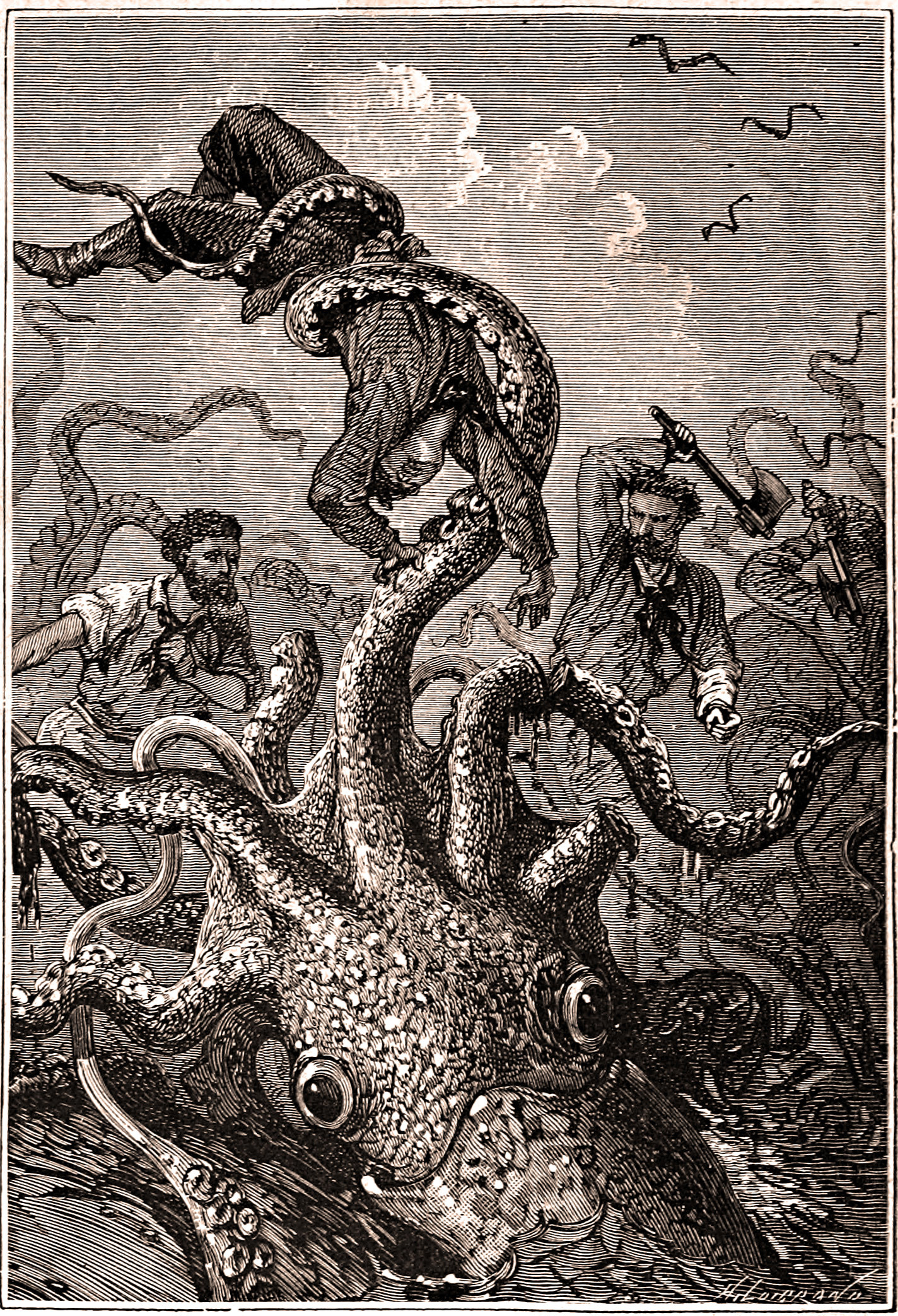- Zoology: they capture a giant squid in Asturias
- Biodiversity Discovering the giant of the deep
"Chance had put us in the presence of that squid and I did not want to miss the opportunity to study carefully a specimen of the cephalopods. I managed to master the horror that inspired its appearance and I began to draw it." With an impulse similar to what moved Professor Pierre Aronnax in Julio Verne's novel Twenty Thousand Leagues Under the Sea, a group of researchers from the University of Copenhagen and the Woods Hole Marine Biological Laboratory (United States) has managed to sequence for the first time the genome of the giant squid (Architeuthis dux). An achievement that will allow to know better this elusive inhabitant of the deep sea and whose details are published this Thursday in the magazine GigaScience .
Until now, giant squids have barely been observed in their natural environment and have never been captured alive , which makes their behavior and nature a mystery. Usually, the sightings correspond to dead specimens, whose decaying corpses float to the surface or end up on the beaches. "The genome is a first step in answering many questions about the biology of these strange animals," says Caroline Albertin, a researcher at Woods Hole. "Like, for example, explaining how they evolved to have the biggest brain among invertebrates , such sophisticated social behavior and incredible ability to camouflage."
After obtaining the genetic information of modern specimens of the Architeuthis dux species, the researchers analyzed and compared the results with the other four cephalopod species sequenced so far, as well as with the human genome. The work describes a very complex set of genes, with 2.7 billion base pairs of DNA (the human genome has 3000). "We have discovered that, as far as genes are concerned, the giant squid looks a lot like other animals," Albertin adds.
A complex brain
The authors underline the presence of two types of genes that are fundamental for development (Hox genes and Wnt genes), present only in the unique - that is, structural - copies of the giant squid genome. That rules out the hypothesis that this creature could have reached its enormous size thanks to the complete duplication of its genome, an evolutionary strategy that is believed to be able to drive the evolution of some vertebrates, including mammals. Although the authors clarify that giving a definitive answer to this fundamental question will require further research.
On the other hand, the authors have identified more than 100 genes related to protocadherin, a very rare protein among invertebrates. "It is believed that protocadherins are essential for a correct connection in complex brains ," explains the researcher. The truth is that octopuses and squid are probably the most alien intelligent creatures to the human being, so the investigations of their brains are key to understanding ours. "Before it was believed that protocadherin was a unique innovation of vertebrates, so we were surprised to find more than 100 in 2015 when we sequenced the octopus genome. Now we see it confirmed," says Albertin.
In addition, the authors have isolated an exclusive genetic characteristic of cephalopods , the so-called reflectins. "They encode a protein that is involved in the production of iridescence," he clarifies. "Color is an important part of camouflage, so we are trying to understand what this family of genes does and how it works."
Intriguing evolution
"This is a preliminary study, which has yet to be refined, but it is the first step to unravel the evolution of this species," says Ángel Guerra, an expert at the Marine Research Institute-CSIC of Vigo (IIM), who has not participated in the job. The genetic peculiarities of the giant squid make its study intrigue the scientists especially . "Its evolutionary flexibility, for example: starting from a being very similar to a clam, the Architeuthis dux has developed formidable capacities, size and specialization," he says.
Although cephalopods have many complex characteristics, their evolution has been totally independent from that of vertebrate animals. " We still have many questions about this elusive animal ," says Guerra. "It was only possible to film once, near Japan." Although it lives all over the world, four areas have concentrated the specimens that - in different states of conservation - have been appearing. And two of them are in Spain: the Canary Islands and the marine canyons in front of Asturias and Cantabria , in addition to Japan and New Zealand.
Despite his few visits to the surface, this creature has captivated the collective imaginary, since it has extraordinary similarities with fictional animals, from the kraken of Norse mythology to the attackers of Nautilus in the work of Jules Verne. The females, which grow more than the males, can reach a size of up to 15 meters and weigh 250 kilograms. Two thirds of its length correspond to the gigantic tentacles that end up in powerful suckers and deploy against prey and predators.
It is believed to be an aggressive animal, which participates in frequent fights that occasionally end in cannibalism. "In its habitat we don't know how it behaves, how long it lives, how it lays its eggs, we don't know why it is cosmopolitan (a single species that inhabits the whole world)," explains Guerra. "But, although we cannot access them in the natural environment, now genetics offers us the possibility of knowing something else."
According to the criteria of The Trust Project
Know more- science
- Science and Health
ScienceThe French city of Rennes prohibits stoves on terraces due to climate change
Science Prince William launches Earthshot, an award that aspires to become the Nobel Prize in Ecology
ScienceChina bans fishing in the Yangtze, the third longest river in the world

